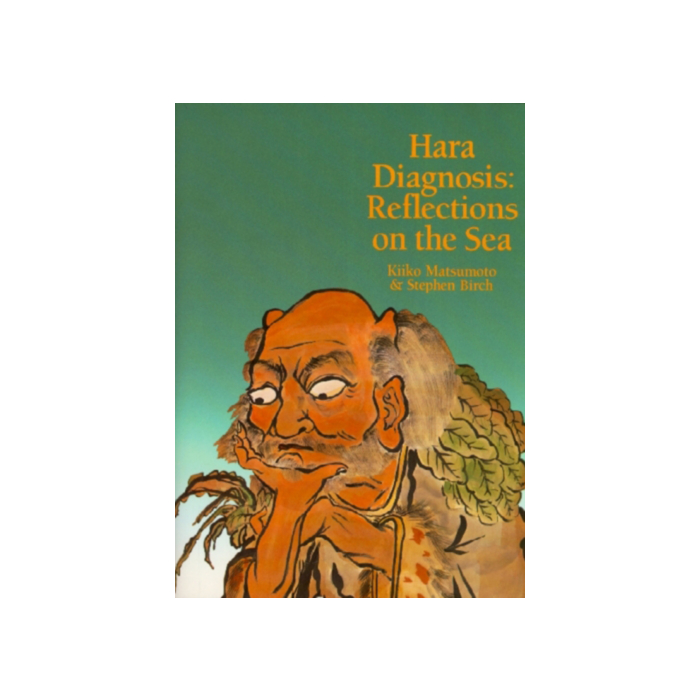Hara Diagnosis: Reflections on the Sea
Share on social media
This is a quite unique book in the field. The title does not capture the breadth of information covered in this text. The authors not only compiled historical and modern uses of hara diagnosis (abdominal palpation) in the field of East Asian medicine, but also attempted a compilation of historical and modern literatures in an effort to explain how and why Japanese practitioners have placed such a strong emphasis on hara diagnosis. After introducing the historical literature, the text examines the several important concepts and models that are found in the early literature. In particular the internal pathways of the extraordinary vessels are discussed in detail. Mental and emotional correspondences and concepts in East Asian medicine are also discussed. The source theories of the Ling Shu and especially the Nan Jing are described in some detail. The concepts of the moving qi between the kidneys and the triple burner are described at great length, and in more detail than in most other books. Historical ideas about the anatomical basis of the triple burner and the channel systems, and speculations about the embryological development of these systems are also described. Modern anatomical correlates are postulated, examining the possible anatomical basis of the channel systems, extraordinary vessels, triple burner and moving qi between the kidneys, including detailed discussions about possible embryological correlations. Although speculative in nature, these discussions compile a wide and very interesting variety of theories that can extend our understanding of acupuncture. The clinical chapters of the text describe basic methods of examining the hara, the various palpatory findings and their general interpretations. This is followed by a large chapter on abdominal shiatsu, and a compilation of traditional Japanese massage methods. The use of hara diagnosis in meridian therapy and especially in the work of Dr. Yoshio Manaka are detailed. The last two chapters extend Manaka's ideas compiling a variety of clinically useful ideas and methods including the system of open points. These chapters on the work of Manaka serve as a good introduction to the use of ion-pumping cords, and Manaka's general treatment approach. Main Description This work presents the theory and practice of abdominal diagnosis with the greatest care ever applied to an important diagnostic technique. Beginning with an historical and cultural perspective on the use of palpation in general, and abdominal palpation in particular, the book details the information required to master and extend the techniques presented. Introductory chapters concern the role of the emotional, mental, and spiritual aspects of Chinese medicine. Detailed etymologies, historical context, and classical sources are used to acquire a greater insight into hun, po, zhi, jing, and shen, as well as many other seminal concepts. The text offers an exceptionally well detailed exploration of interior meridian pathways and the role of classical Chinese energetic anatomy, including concepts such as source and origin. This is followed by a description of the anatomy and physiology of the body's energetically active fascial system, drawn from the latest Western studies, that establishes the authors' rationale for acupuncture based in a complex biological information system. Detailed, step-by-step procedures for practical diagnosis and therapy are accompanied by profuse illustrations and useful case histories. The treatment systems described are coordinated through the abdominal patterns and are staged from the general to the specific. Therapies and techniques include hara shiatsu, sotai and breathing exercises, and five-phase treatments. Clear instructions are provided for using Manaka's ion pumping cords, mu point diagnosis, O-ring diagnosis, and secondary diagnostic and treatment strategies such as palm diagnosis. The text concludes with a full description of biorhythmic treatment procedures drawn from the Da Cheng and Dr. Manaka's practice. This chapter contains the information necessary to use the biorhythms, including tables for the bi-hourly and daily meridian rhythms, stem-branch rhythms, the ten-day cycle of the phases and source points, and the sixty-day cycle of the extraordinary vessels. The point associations are detailed, as are the selection procedures. The text presents everything that is required for a practitioner to begin clinical application. Hara Diagnosis is replete with useful therapeutic and diagnostic information, clinical and theoretical insight, and approaches to the understanding of acupuncture that draw East and West ever closer. It is the first text generated in the U.S. that has been favorably received by Japanese practitioners.
| ISBN | 9780912111131 |
|---|---|
| Author | Kiiko Matsumoto |
| Type | Hardback |
| Language | English |
| Pages | 484 |

